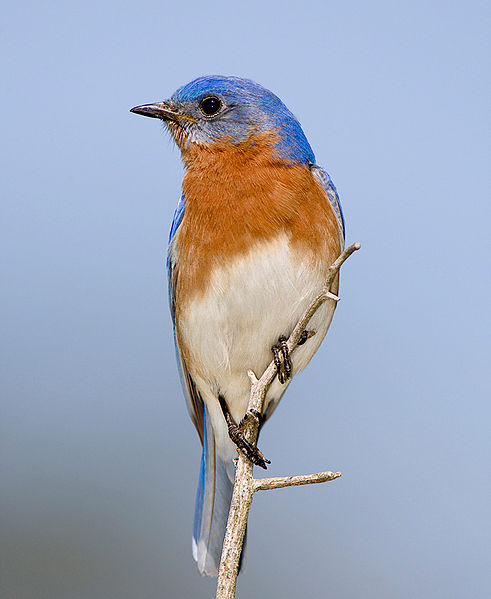One of the prettiest birds you’ll see on our campus is the Eastern Bluebird:

(Original image licensed Creative Commons Attribution Share-Alike)
What they look like: The Eastern Bluebird is a thrush, related to the American Robin and the Wood Thrush. A male would have a blue head, back and tail, but then light brown covering its chest and white covering the rest of its body. Their eyes are usually black, but sometimes some brown shows on the edges.
Where you’ll see him: This type of thrush quite enjoys the bottom branches of oak and pine trees in our forest. You will probably see one in either of the forests surrounding our school. Eastern Bluebirds do not travel in groups or packs, so it’s normal to see them on their own or with one or two others.
What he eats: These bluebirds are omnivores, so they mostly eat small insects, worms, caterpillars, seeds & fruits.
What he sounds like: Eastern Bluebirds sing a warbling song made up of usually 1-3 notes. You can listen to their calls here. They sing these low-pitched notes about three times. If you hear a loud version of this song, it’s probably a female in danger. A soft song is a male trying to mate or tell other males that the area is already “taken”.
Where you can learn more about him:
http://en.wikipedia.org/wiki/Eastern_Bluebird
http://www.allaboutbirds.org/guide/eastern_bluebird/sounds/ac
By Ryan M.

